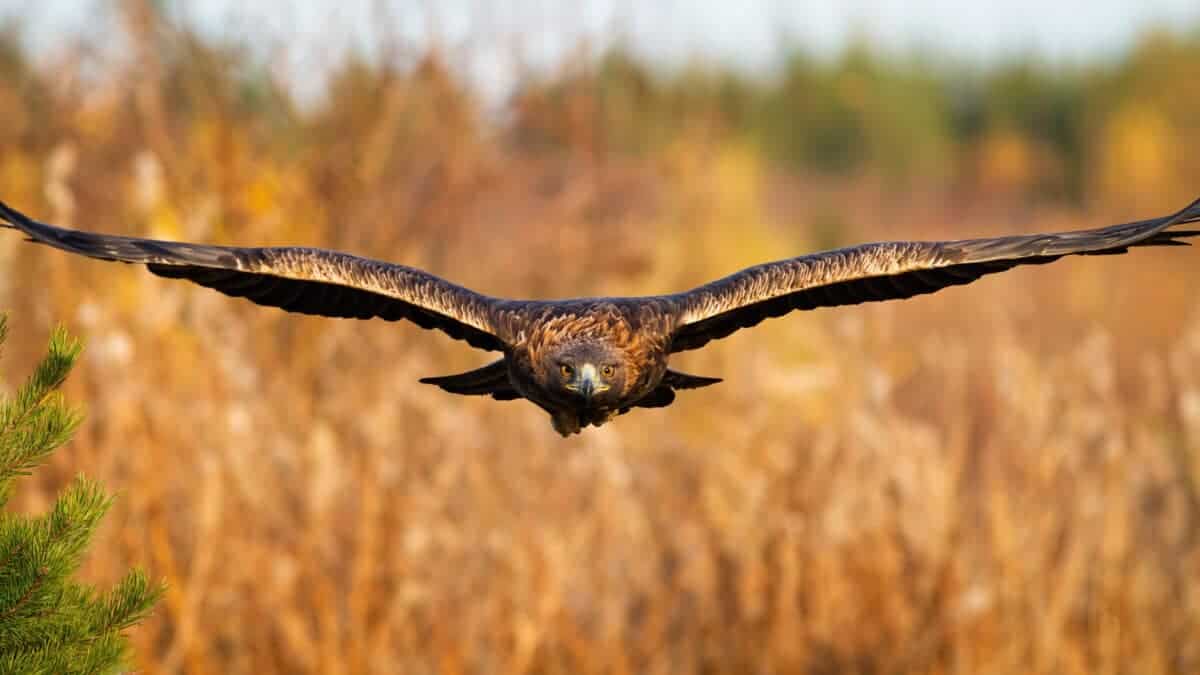The golden eagle (Aquila chrysaetos) stands as a symbol of power and grace, known for its majestic flights across vast landscapes. These magnificent birds of prey are found across the Northern Hemisphere, displaying remarkable adaptability to various terrains and climates.

Distribution and Habitat:
Golden eagles are spread across North America, Europe, Asia, and parts of North Africa. Their habitat range is extensive, encompassing diverse environments from mountainous regions and open plains to arid deserts and coniferous forests. These adaptable birds thrive in both remote wilderness and human-altered landscapes, showcasing their ability to coexist with various surroundings.
Terrain Preferences:

While golden eagles are highly adaptable, they show a particular affinity for rugged terrains. Mountainous landscapes provide ideal nesting sites, offering vantage points for hunting and a secure environment for raising their young. The open spaces of grasslands and steppes are also favored, allowing these eagles to spot prey from a distance and engage in their impressive aerial pursuits.
Diet and Hunting:
Golden eagles are carnivorous predators with a diverse diet that includes a wide range of prey. Their primary targets are mammals, and they are known to hunt rabbits, hares, ground squirrels, and even young ungulates. Birds, including waterfowl and game birds, also feature in their diet. The adaptability in their hunting choices contributes to their success in various ecosystems.

Golden eagles are renowned for their exceptional hunting skills. Their powerful talons and sharp beaks enable them to efficiently catch and subdue prey. With incredible speed and agility, they execute swift and precise aerial maneuvers, making them formidable hunters capable of taking down prey larger than themselves.
Eyesight and Hearing:

One of the most remarkable features of golden eagles is their exceptional eyesight. Their eyes are among the most powerful in the animal kingdom, enabling them to spot prey from incredible distances. With eyesight eight times more acute than that of humans, these eagles can identify small mammals or other prey from high altitudes.
In addition to their keen eyesight, golden eagles possess excellent hearing. While not as pronounced as their vision, their auditory senses play a crucial role in hunting and navigating their surroundings. The combination of acute vision and hearing allows them to detect prey both on the ground and in the air, making them highly efficient hunters in diverse landscapes.

The golden eagle’s ability to cover extensive distances, adapt to various terrains, and exhibit exceptional hunting prowess makes it one of the most iconic birds of prey in the Northern Hemisphere. From soaring across mountainous landscapes to navigating open plains, these eagles have secured their place as both powerful predators and symbols of the wild beauty that spans across continents. As guardians of diverse ecosystems, golden eagles play a vital role in maintaining the delicate balance of the natural world.
Join our Forum for free today!

- Second American Killed by Elephant in Zambia This Year - July 22, 2024
- Elderly Man Kills Grizzly Bear in Montana - July 22, 2024
- Missing Cat Found Weeks Later, 40 Miles Away - July 21, 2024

